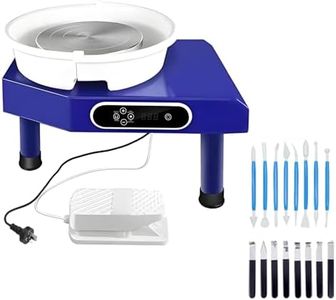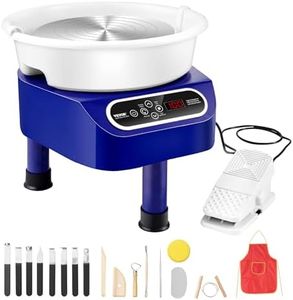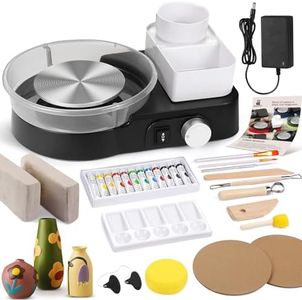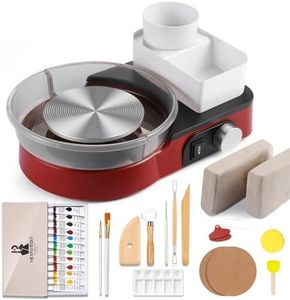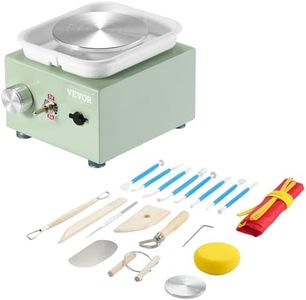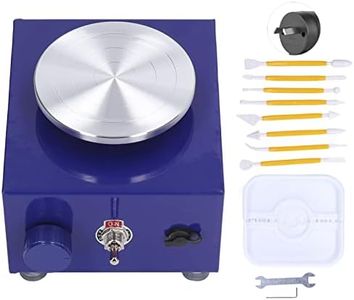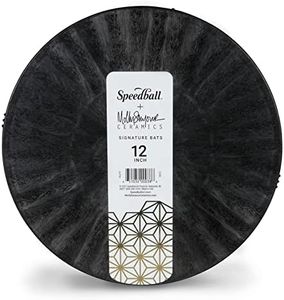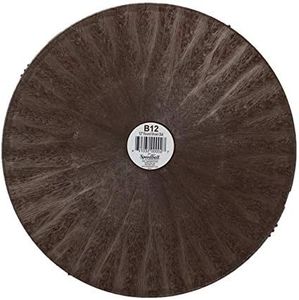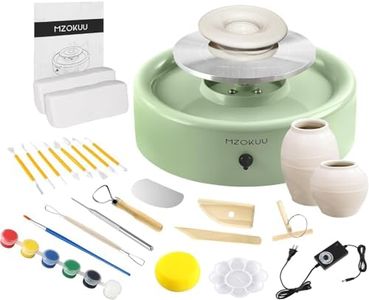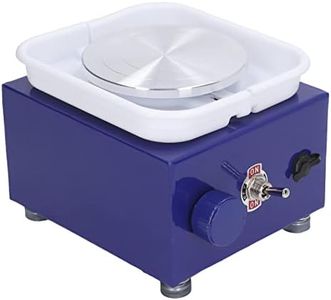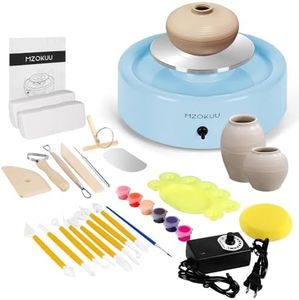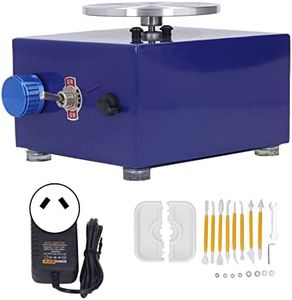We Use CookiesWe use cookies to enhance the security, performance,
functionality and for analytical and promotional activities. By continuing to browse this site you
are agreeing to our privacy policy
10 Best Pottery Wheels
From leading brands and best sellers available on the web.Buying Guide for the Best Pottery Wheels
Choosing the right pottery wheel is important whether you are a beginner or an experienced potter. The right wheel will make throwing, trimming, and shaping clay much easier and more enjoyable. When selecting a wheel, it’s helpful to think carefully about where and how you��’ll use it, how much space you have, and what kinds of pieces you want to create. Understanding the main features and how they fit your plans will help you make a confident choice.Drive TypeThe drive type in a pottery wheel refers to the mechanism that powers the spinning of the wheel head. The two main types are electric and kick (manual) wheels. Electric wheels spin with a motor, making them easier for beginners and convenient for consistent speed control. Kick wheels are powered by foot, offering a quieter, more traditional experience but can be physically demanding. For those wanting to work on larger pieces quickly or who value ease of use, electric is best. If you're interested in a more hands-on approach or silent operation and don't mind extra effort, a kick wheel could be appealing.
Wheel-Head SizeThe wheel-head is the flat spinning surface where you place your clay. The size matters because it dictates how large or small your pottery pieces can be. Smaller heads (under 12 inches) are good for those only making small items like cups or bowls. Larger heads (12 inches or more) accommodate larger or more varied shapes, like big vases or platters. Consider what you dream of making—as your skill grows, a larger head may give you more creative freedom.
Motor Power (HP)Motor power, often measured in horsepower (HP), tells you how strong the wheel’s engine is. Low-power motors (under 1/2 HP) handle small amounts of clay (under 25 pounds) and are perfect for beginners or those only making lightweight items. Stronger motors (1/2 HP or above) are better if you want to work with larger amounts of clay, make bigger pieces, or avoid the wheel slowing down under heavy loads. Choose based on your likely project size and whether you expect to grow into larger work.
Speed ControlSpeed control determines how easily you can adjust the spinning speed of the wheel. Some wheels have foot pedals (for seamless hands-free adjustment while working), while others use hand levers or dials. Smooth speed change is important for shaping and centering clay, especially for beginners learning technique. If you value responsive control and convenience, look for a wheel with a sturdy, sensitive foot pedal.
PortabilityPottery wheels can be heavy and bulky, but some are designed to be more portable for moving between studios or classes. Portable wheels are lighter, may have handles, and sometimes fold for storage. If you don’t have a dedicated space or expect to take your wheel on the go, portability is essential. If you have a permanent studio, a heavier, stationary wheel provides more stability during use.
Noise LevelNoise level refers to how loud the wheel is during operation. Electric wheels vary, with some motors being quieter than others. If you work in a shared space or at home and want to avoid disturbing others, a quieter wheel is better. Kick wheels are almost silent, an important factor for those sensitive to noise.
Splash Pan and CleanabilityA splash pan is a removable tray that catches clay, water, and messes thrown off the wheel. Some designs are easier to remove and clean than others, which can save time and keep your studio tidy. If you want easy cleaning and a neater space, look for a wheel with a well-designed, removable splash pan.
